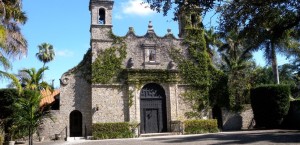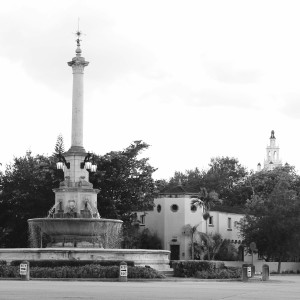In 1989, the city government tore down Robert E. Lee Middle School to build Jose de Diego Middle School. In that one sentence, I’ve just distilled for you the past 80 years of Miami history. The new school sits within the bounds of what was once Wyndwood Park, and what is now a favorite Miami neighborhood, the post-hip Wynwood.
In Miami’s early days, Wynwood was a haven for carousing hooligans who were unimpressed with the city’s liquor laws (until WWI, Wynwood was not technically part of Miami). I suppose in at least that sense not much has changed, though the saloons these days tend to boast about the locally-sourced hops for their beer, and the carousers have decidedly more eccentric hair.
Wynwood became an industrial sector of town through the Great War and the equally Great Depression: bottling plants, large-scale bakeries, and garment wholesalers sought cheap land; their workers lived nearby for much the same reason. Around WWII, a massive Puerto Rican influx earned Wynwood the moniker “Little San Juan”. Then by the 70s, drugs and degeneracy earned the little neighborhood several less endearing appellations.
By the late 80s, Miami began to change yet again. Decorated war hero Dexter Lehtinen, a Green Beret who served valiantly in Vietnam and has the scars to prove it, left the Florida Senate to head the U.S. Attorneys. One of his greatest triumphs was a massive counteroffensive against the high-level animals who were funding and encouraging the foot soldiers butchering one another in the Miami streets (and even in crowded Dadeland Mall. Thankfully, that doesn’t happen anymore. There are now many other reasons not to go to Dadeland.).
During the Lehtinen years, nobody was considered above the law – whether he was the President of Panama or an American Judge. Corrupt politicians went to jail. Those big boys who managed to evade prison fled with their muscle to less contested parts of the globe. Benighted neighborhoods started to see hope.
In the midst of all of this, a group of artists who could no longer afford the Grove purchased a Wynwood bakehouse and converted it into a space for studios. A decade later, Goldman properties looked around at a hip, increasingly safe neighborhood, and said there’s gold in them thar hills: they financed Wynwood Walls, a graffiti exhibition, and encouraged graffiti artists to paint the town. Restauranteurs and shop owners routinely commission designs to cover their walls. At the time of this writing, almost every smooth surface in Wynwood has been sprayed with color.
To be sure, Wynwood now thrives: families drive in to walk the neighborhood by day; young revelers stumble through the flourishing scene by night. When Beckham builds his soccer stadium, it will be a short walk away from Kush…



